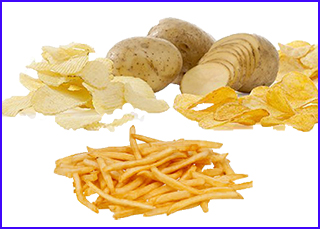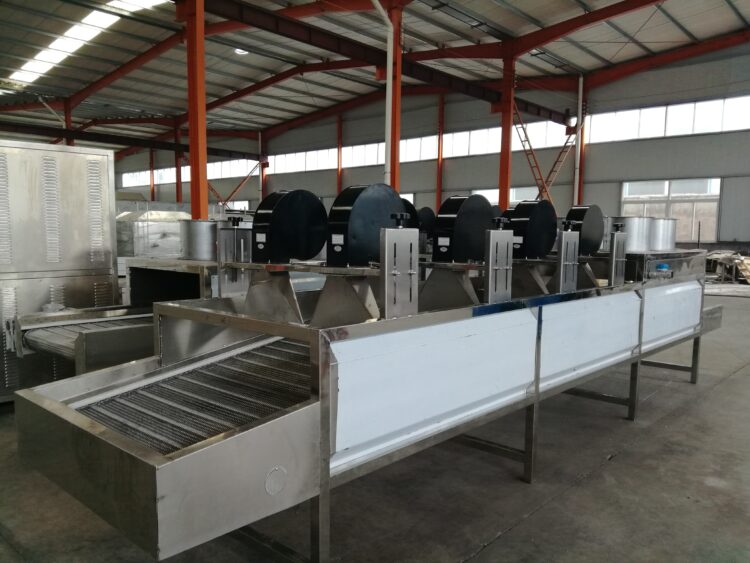Potato popularly known as ‘The king of vegetables’, It finds bulk usage in savory & snack food industry for the production of chips, fries, and extruded snacks.
Frozen French fries and chips share the fresh potatoes consumption of around 30% and 12% respectively.
There are various parameters which play a very important role in the processing of the potato and can be summed under two main categories (1) Physicochemical Parameters such as reducing sugar, dry matter content, starch content, storage conditions, and storage temperature;(2) Processing Parameters such as temperature of blanching, frying, slicing thickness, frying time, oil absorption and free fatty acids.
Potatoes with high solids content (20-22%) are preferred during chip and French fries processing, because they result in better texture, higher yields and lower oil absorption in the finished product(Lisinska, 1989).
For the production of French-fries, long shape and high dry matter content is a popular choice.
The content of reducing sugars is closely related to the final color of the fried potatoes(Singh R. D., 1976)as low reducing sugar content minimizes the color development during frying, which is generated by the Millard or non-enzymatic browning reaction(Lisinska, 1989).
To make fried or dehydrated products the reducing sugar content should be less than 100mg/100gram (fresh weight of chips) and less than 200mg/100gram (fresh weight of French fries)(Kumar, 2011).
Storage temperature between 8.9 and 12.8 C (48 to 54 F) are favorable for maintaining for maintain most potato varieties in nearly optimum conditions for chipping (Ohad& Wright, 1971; 1954).
Some potato processing plants use blanching prior to frying to improve the color of the chips. The blanching solution is heated to 65 -95 C and blanching takes around 1min. Excessive water is then removed and potato slices are fried in a continuous fryer, where they remain from 1.5-3 minutes at170 -190 C, until the moisture level is less than 2% (Moyano, 2008).
Deep-fat frying is a complex unit operation involving high temperatures, significant micro structural changes both to the surface and the body of the chip and simultaneous heat and mass transfer resulting in flows of water vapor (bubbles) and oil in opposite directions at the surface of the piece(Bouchon, 2001). In case of these fried products the most desirable feature is the formation of a composite structure: a dry, porous, crisp and oily outer layer or crust, and a moist cooked interior or core.
Potato chips are very thin pieces (1.27 – 1.78mmthick) of potatoes fried to final oil and moisture contents of 35% and 1.7%, respectively (Moreira, 1999).
On the other hand the French-fries which also have a large market share, represent a composite structure formed by two regions: (i) an external dehydrated and crispy region where oil is located; and (ii) a humid and cooked core region free of oil. The external crust is very similar to the structure of a fried potato slice or potato chip (Pedreschi, 2002). The final oil and moisture content of French – fries is about 15% and 38%, respectively (Aguilera,2000;Saguy,2003).
Nowadays the consumers are becoming health conscious and therefore these deep-fat fried products need to be processed in a manner which fulfills the sensory and health aspects of the consumer. Therefore, the potato chips and fries vacuum fryingprocess has become the best solution.
Refer to:


